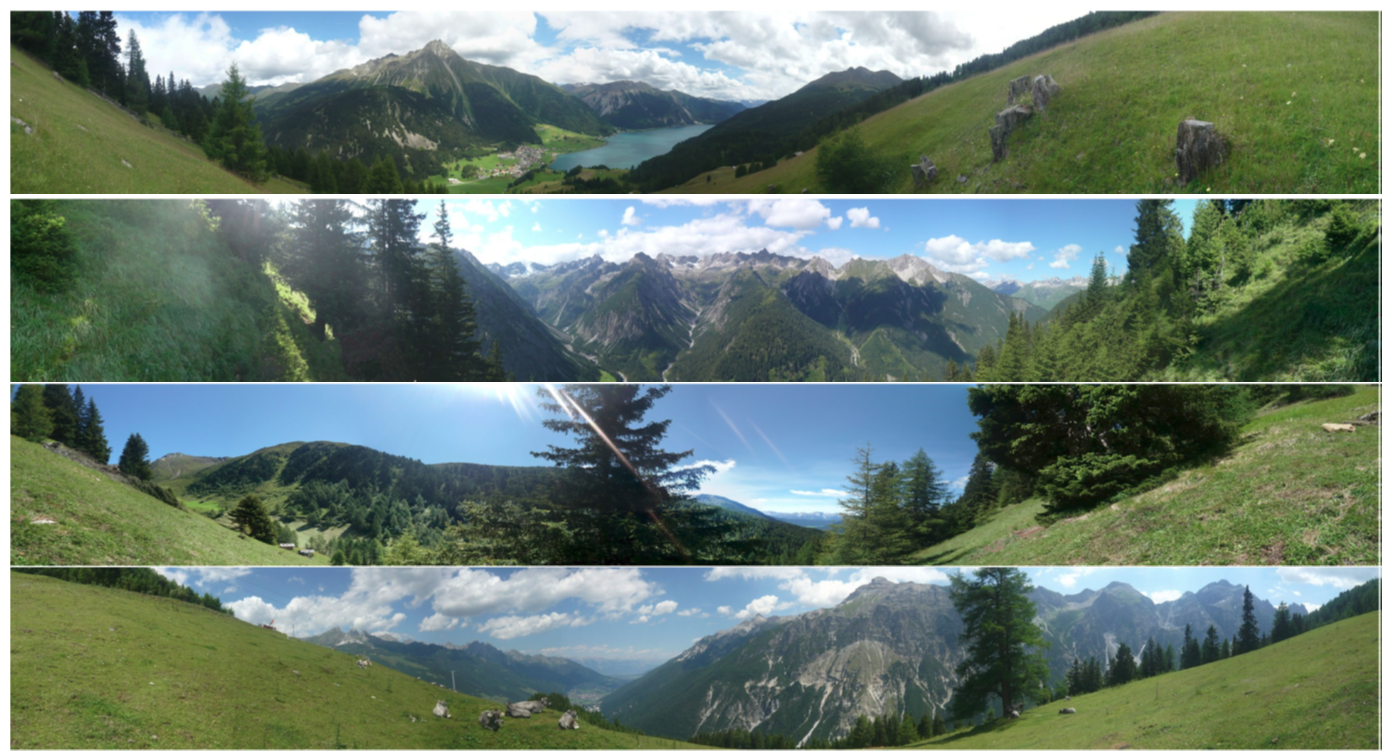
(remove this paragraph once the translation is finished)
Estetska vrednost
Humans experience and relate to ecosystems and landscapes through their aesthetic appreciation. Scenic beauty or visual quality of the landscape are one dimension that is widely recognised, deriving from the interaction between the biophysical features and the human observer1) . The aesthetic value of a landscape has been related to biological, cultural and social dimensions. The biological dimension describes landscape aesthetic values through visual concepts such as coherence, legibility, complexity, mystery and diversity, as well as visual scale concepts, such as landscape rooms, visibility, openness, enclosure, spaciousness2) . High values have further been associated with natural landscape features like mountains, water, and vegetation, whereas urban growth, infrastructures, or garbage decrease the aesthetic appreciation3) . Social and cultural aspects play an important role in the perception of aesthetic values, and differences were found between different social groups or people with different cultural background4) .
Although research in visual aesthetic quality of landscapes is well established, efficient and standardised evaluation techniques for cultural ecosystem services are still needed to support decision-making and landscape planning5) . Aesthetic values have mostly been quantified by using indicators such as visual quality, number of scenic roads or house prices6) . To map aesthetic values, mainly spatial indicators are applied describing specific landscape features or pattern7) . Questionnaires or interviews are used to gather people's judgements8) , and participatory mapping exercises can integrate the spatial dimension9) . Spatial models by combining viewshed analysis with landscape indicators and human preferences via regression analysis are suitable for analysing a great number of observer points10) ) . Recently, studies used crowd-sourced information from social media such as Flickr and Panoramio to analyse landscape preferences by relating geo-tagged photographs to landscape visual indicators11) .
 Figure 1: Spatial model to estimate aesthetic value inmountain areas (from Schirpke et al., 2016)12) . The model combines spatial analysis (landscape metrics, the visible area, landscape features) with landscape preferences from a tipercepon survey via regression analysis. The model was applied in two study areas in the Central Alps to estimate the aesthetic value along hiking trails.
Figure 1: Spatial model to estimate aesthetic value inmountain areas (from Schirpke et al., 2016)12) . The model combines spatial analysis (landscape metrics, the visible area, landscape features) with landscape preferences from a tipercepon survey via regression analysis. The model was applied in two study areas in the Central Alps to estimate the aesthetic value along hiking trails.

Figure 2: Examples of highly rated pictures from the perception survey (from Schirpke et al., 2016)13) .
See also: